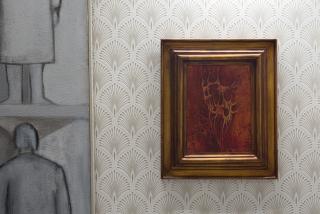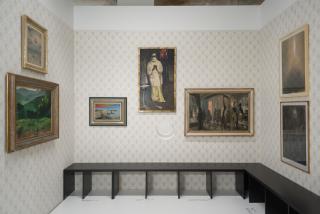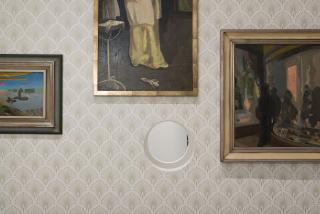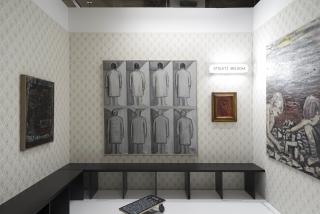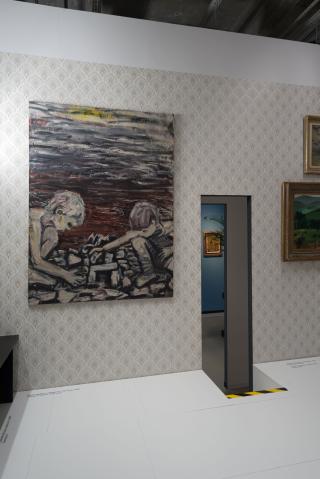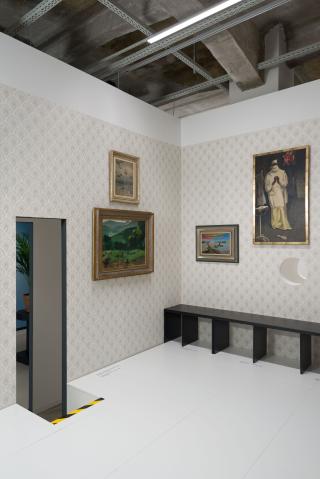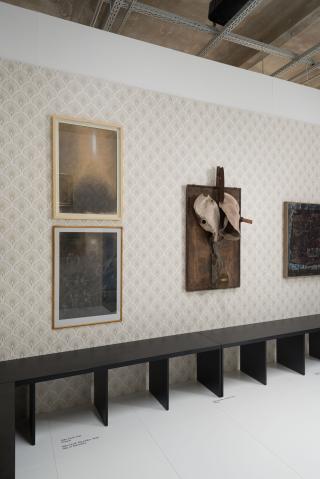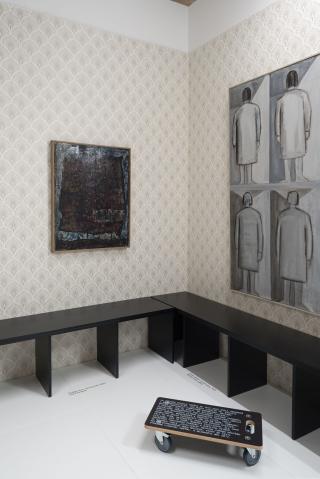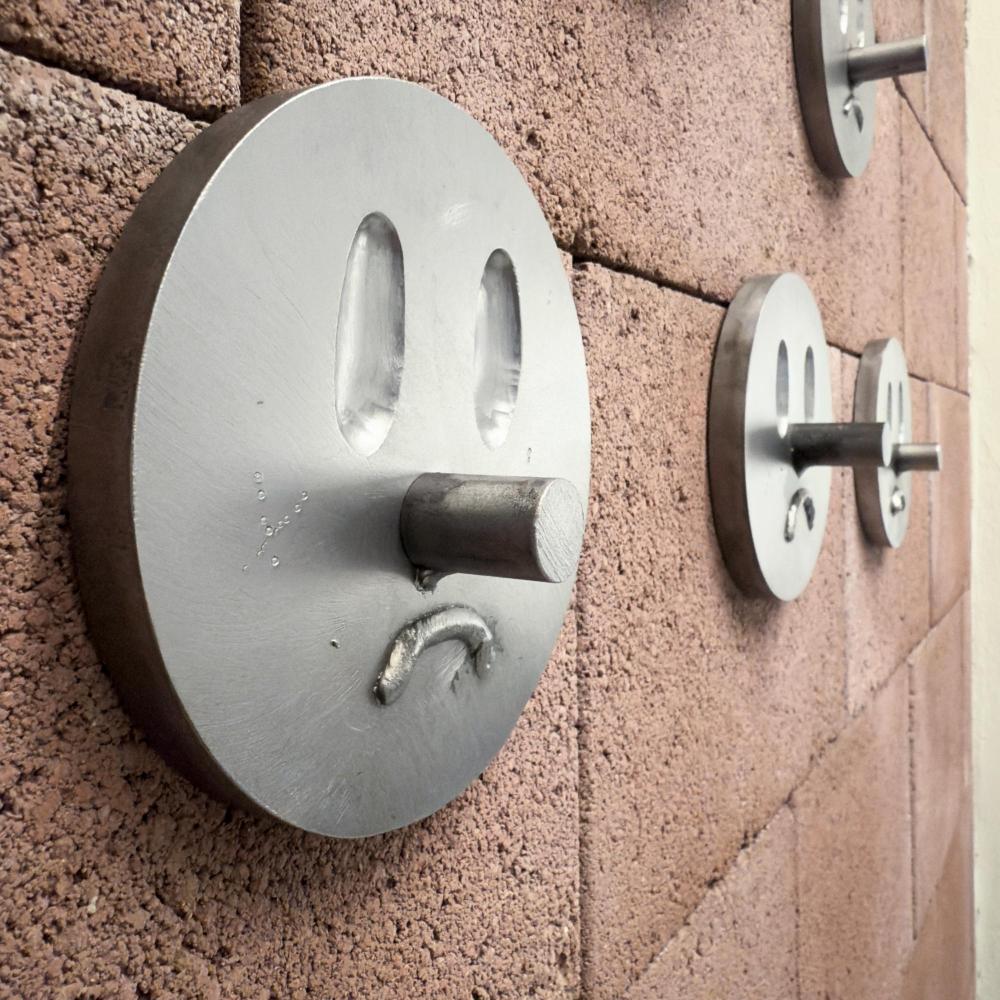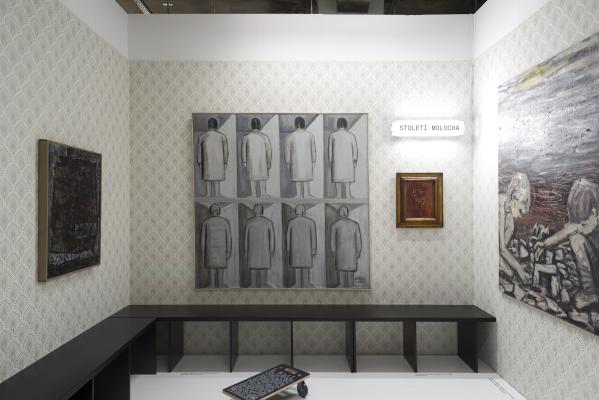
The fourth room of the Signal III exhibition at the Telegraph Gallery is titled "Century of Moloch in other words Existentialism." The significance of the whole section is most telling by virtue of the contrasts - the previous cubism, which was about the search for a new form and a different grasp of reality, is replaced by a raw concern with existence in its basic form. David Voda, the exhibition's curator, places the crisis of our 20th century life in relation to the ancient god Moloch - the cult of modern civilization functions as a devourer of human destinies in a constant cycle that raises original existential questions in artists.
A green landscape, symbol of prosperity and harvest, disturbed by one of man's greatest nemesis - death. Suddenly, the symbolism of hope in a revived nature fades away, leaving only the fear of the unknown. This is also how the painting Landscape by Rudolf Kremlicka from 1919 can look like, moreover, in dialogue with the work Execution Grounds by Jaroslav Panuška from 1900. Although most likely caused by a different trauma, both works carry the same message - life and death on the most basic scale. Another dimension of existentialism is added by Václav Tikal's painting After the Battle. Surrealistic associations evoke unpleasant feelings of emptiness and recurring fear in the viewer. One could continue in the same way with other works in the space of the fourth room. Moreover, the existential tendencies here can be traced on several levels. The basic one is the choice of themes - the circuits related to the questions of the crisis moments of human existence are followed, for example, by a gloomy range of colours, where isolated strokes of red affect the viewer like urgent cries into the darkness.
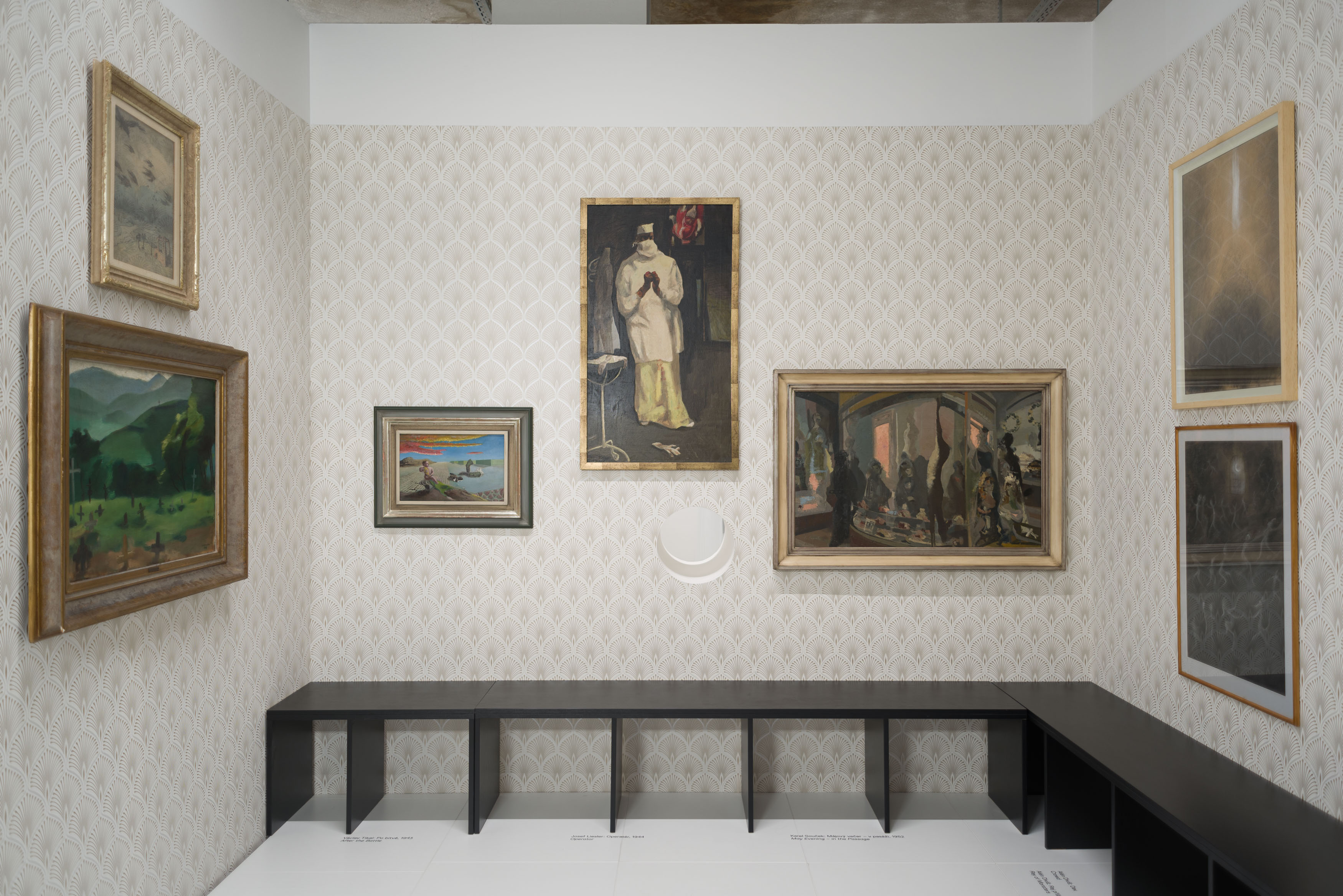
The overall impact of the room is accentuated by Mark Thera's architecture - the narrow and cramped passageway into the room, and the elevation above the rest of the gallery, add further value to the space. An equally important element is the circular section in the wall communicating with the white room, which bears the apt title "Glass House" - on the one hand a relationship to light and hope, on the other a look back to a past that should not be forgotten, recalled by the powerful 1972 painting by Květa Válová, Women from Lidice.
In addition to the aforementioned, the room exhibition includes works by Josef Liesler, Karel Souček, Alén Diviš, Aleš Veselý, Zbyšek Sion, František Muzika and Daniel Balabán.
By Barbora Křížová / Telegraph Gallery
Photo: Matěj Doležel
